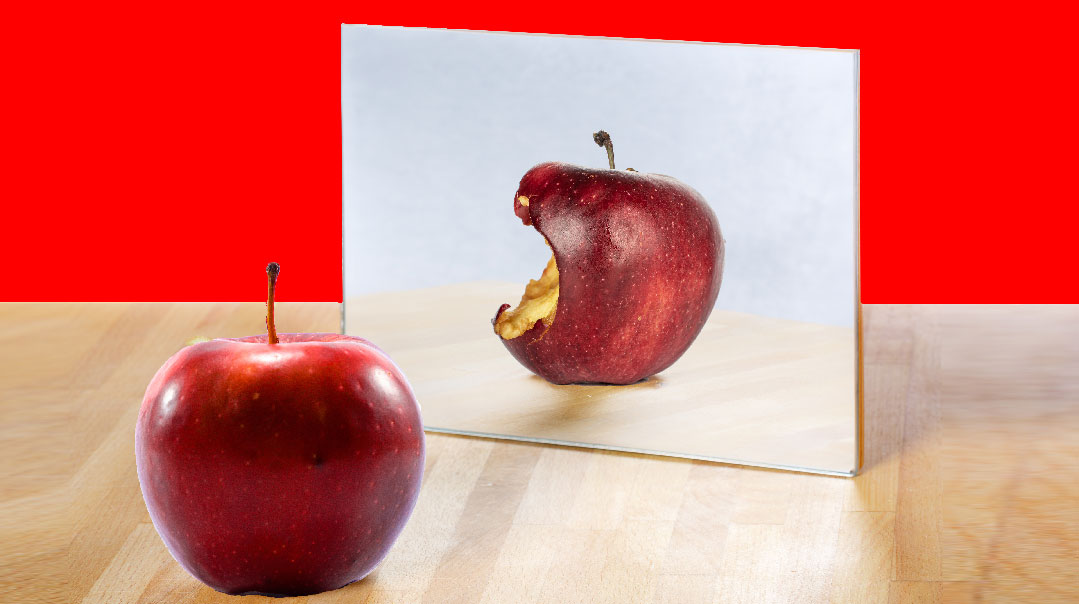Pain in Vein

Varicose veins may appear to be nothing more than a cosmetic issue, when in fact this condition could impact long-term health.

“People think they’ll live with the varicose veins or that if they don’t think about them they won’t bother them. But if you don’t take care of them they get progressively worse.”
I t took eight pregnancies before Sarah finally did something about the unsightly painful purple veins crawling up her legs.
Though she’d suffered from varicose veins during most of her pregnancies no vascular surgeon would treat her during pregnancy; afterward the condition would improve on its own so she’d lose her motivation to seek treatment. This time though she’d made it a priority to see a doctor before her varicose veins disappeared. That decision proved to be a lifesaver.
Four weeks after the birth of her eighth child Sarah went for an MRV (magnetic resonance venography) a type of imaging similar to an MRI that focuses specifically on blood vessels.
After reviewing the results several days later the vascular surgeon’s office called her to come in immediately. Sarah recalls being frightened: “They wouldn’t give me any other information.”
Her diagnosis: a rare condition called ovarian vein thrombosis (OVT) — a blood clot in the ovarian vein. While every blood clot left untreated over a long period of time is potentially life-threatening the proximity of the ovarian vein to the heart makes OVT especially dangerous due to the likelihood it will block blood flow to the heart.
Despite her history with varicose veins Sarah had no idea other veins in her body could also be affected by varicosities — nor that they could be life-threatening.
What Are Varicose Veins?
In order to understand how varicose veins develop you need to start with the circulatory system which consists of many veins and arteries; blood vessels with two different functions. Arteries bring oxygenated blood (blood that contains oxygen) from the heart to the rest of the body and veins transport deoxygenated blood (blood from which most of the oxygen has been removed) back to the heart.

Women with a hereditary predisposition to varicose veins should start wearing graduated compression stockings early in the pregnancy — all the time.
Healthy muscles squeeze the deep veins pushing deoxygenated blood back to the heart. At the same time one-way valves keep that blood flowing in the right direction. When the muscles relax valves inside the veins close preventing the backward flow of deoxygenated blood.
In the legs specifically — the most common place for varicose veins to develop — there are three types of veins: superficial veins which lie close to the skin; deep veins which lie in or beneath the muscles; and perforating veins which connect the superficial to the deep veins.
With varicose veins the valves are typically an issue. “Most patients with varicose veins have abnormal valve function of the great and/or small saphenous veins the main superficial veins of the legs ” explains Dr. Gary Nackman MD FACS clinical associate professor of surgery at UMDNJ-Robert Wood Johnson Medical School and practitioner at NJ Vein Care and Aesthetics Center in Clifton New Jersey.
“If blood doesn’t move through deep veins pressure increases in the vein and a condition called deep venous thrombosis may arise. If the valves in the superficial system of veins are not working properly the condition is called superficial venous insufficiency.”
The resultant dark-blue crisscrossing veins can cause a sensation of heaviness burning aches and pain in the legs and lead to blood clots and ulcers.
In Sarah’s case the vein dysfunction extended past her legs to the ovarian vein. In fact when she’d visited the vascular surgeon during her pregnancy an ultrasound had revealed how far up it had traveled. However the doctor hadn’t realized how worrying that was until her post-pregnancy test revealed the clot that formed due to deoxygenated blood sticking to the lining of the vein walls.
Once diagnosed Sarah was put on blood thinners to prevent further clotting until she was ready to treat her varicose veins.
An Ounce of Prevention
Although women can take steps to prevent and control varicose veins often the busy lives we lead often aren’t very conducive to preventive self-care.
“People think they’ll live with the varicose veins or that if they don’t think about them they won’t bother them ” says Devorah Schwartz proprietor of The Surgical Sock Shop with locations in Monsey Monroe Brooklyn and Lakewood. “That isn’t the case — if you don’t take care of them they get progressively worse.”
Wearing compression stockings all day is probably the most common approach to prevent the worsening of varicose veins. However it’s important to be fitted by someone qualified; that ensures maximum comfort and effectiveness.
“The correct compression isn’t a cure; it simply prevents the condition from escalating,” Devorah explains. “Compression stockings aid the veins by preventing them from expanding. This doesn’t allow blood to pool in the lower extremities, and helps push it back up for proper oxygenation to occur.”
Chava expected varicose veins to develop with her pregnancies, since that’s what happened to her mother. She didn’t realize, though, that this was a lot more than an unsightly cosmetic issue. It was actually painful. Blood tends to pool in the legs after long periods of standing, making for more pronounced symptoms.
“I couldn’t stand,” Chava remembers. “I’m not a lazy person, and I didn’t want to sit with my feet up all day; I had so much to do, and I couldn’t do it!”
She suffered for years before going for treatment and found tremendous relief in the interim through supportive stockings. “Instead of getting a new Yom Tov outfit, I treated myself to three pairs of top-quality, $180 stockings that weren’t covered by insurance. They were the ultimate in comfort and design, and easy to pull on,” she says. “They allowed me to function instead of being glued to the chair!”
When Chava noticed her daughters beginning to develop varicose veins during their first pregnancies, she encouraged them to start wearing supportive stockings immediately. “They know what I’ve been through and are motivated to prevent their own varicose veins from becoming a debilitating condition,” she says. “I only wish someone would’ve educated me earlier….”
Depending on the severity of the condition, different strengths of compression stockings are prescribed, with most of the pressure applied at the ankle area. No matter where the varicose veins are located, the ankle area strongly affects how a person stands, which in turn affects circulation.
Although men can develop varicose veins, the condition is a lot more prevalent in women, and is often related to hormones. Therefore, Devorah suggests that women with a hereditary predisposition to varicose veins start wearing graduated compression stockings early in the pregnancy — all the time. This is especially important up to six weeks postpartum and during monthly cycles.
“Even when not pregnant, it’s crucial to put on the stockings before getting out of bed in the morning — before the veins have a chance to expand,” Devorah says. “The supportive stockings have a fashionable look, come in nice colors, and are often covered by insurance. Don’t wait until the condition causes medical difficulties.”
Some women have a difficult time putting on stockings, especially during pregnancy when bending isn’t that simple. Devorah recommends wearing rubber gloves to eliminate friction, making it easier to pull them on.
For those who wear supportive knee- highs, a device called the Stocking Butler can be very helpful as well. It stretches socks open to allow the foot easy access.
Another preventive and extremely effective measure is exercise. Since exercise works the muscles, it helps force blood out of the veins and around the circulation system, eliminating the pooling that leads to varicose veins.
“Both my parents have varicose veins,” Shaindel says. “I knew I was genetically inclined to continue the pattern. I made sure to get outfitted with supportive stockings at the first sign of varicose veins during my first pregnancy.”
With time, Shaindel’s vigilance wore off, especially in later months of pregnancy, when pulling on stockings became quite cumbersome. Yet during her fourth pregnancy, the condition didn’t escalate as it had in previous pregnancies — because that pregnancy was preceded by a year’s worth of regular, intense exercise. “It was as if my legs didn’t realize that I was pregnant!” she exclaims.
Herbs and vitamins are another noninvasive measure that may help prevent or heal varicose veins. (Check with your healthcare provider before taking a new supplement, even if it’s “natural,” especially during pregnancy.)
“I was young and fit, yet couldn’t lift my legs to take a single step without wearing the tightest compression stockings,” Devorah recalls. “After visiting a holistic healer who guided me as to which vitamins and herbs to take, I was able to downgrade to the lightest compression stockings.”
Back on Your Feet
What if the condition has escalated? Are you doomed to suffer from varicose veins for the rest of your life?
Not at all. In the 21st century, a plethora of treatment options are available.
Abnormal veins visible on the skin are categorized by diameter, explains Dr. Nackman, and that determines the course of treatment. The smallest ones — spider veins — are red or pink threadlike veins less than one millimeter in diameter. Reticular veins, blue in color, range between one and three millimeters in diameter. Varicose veins are bulging blue veins larger than three millimeters in diameter.
“The key to proper treatment is the correct diagnosis of the root cause,” Nackman says. “We start with a careful history and physical examination to identify risk factors, along with signs and symptoms. Next, noninvasive ultrasound diagnostics create a road map of the venous system to locate valve dysfunction. Only then can an appropriate treatment plan be developed.”
Often, ultrasound evaluation identifies that the valves of the saphenous veins are not functioning normally. A minimally invasive technique can close the saphenous vein, rerouting blood into veins with functional valves.
Common options covered by most insurance plans for this type of procedure are radiofrequency endovascular ablation (RFA), endovascular laser therapy (EVLT), and endovascular laser ablation (EVLA).
Nackman explains how these procedures work: A needle is placed into the vein, followed by a special catheter. Then, the doctor heats the tip of the catheter using either radiofrequency or laser energy. As the catheter is pulled out, the heat destroys the vein, causing it to collapse and seal shut.
Once the varicose veins are destroyed, they will disintegrate, and healthy veins take over their circulation duties.
Another method, recently approved by the Food and Drug Administration, is VenaSeal. In this procedure, a special glue is injected into the vein, preventing blood flow.
For those who have suffered from varicose veins in prior pregnancies, Nackman recommends closing the saphenous vein in between pregnancies to reduce the escalation of varicose veins in subsequent pregnancies.
“In my experience, the larger the varicose vein, the more likely one is to benefit from its removal,” Nackman says.
After saphenous veins have been treated, a procedure called sclerotherapy may be used to treat smaller, residual veins. This involves the injection of a solution that scars and closes the veins. After a few weeks, treated varicose veins should fade. For larger veins, the solution often needs to be made into a foam — a procedure called foaming sclerotherapy. Typically, the closed veins are gradually reabsorbed by the body and disappear.
For very narrow veins that can’t be injected with the solution, using laser to destroy the vein is an option.
Sarah had sclerotherapy done after her clot disappeared, and her saphenous vein was removed. Yet a subsequent pregnancy brought varicose veins back into her life, in the veins that took over circulation.
Devorah has heard the same complaint from many women; even with various treatments (especially laser), their varicose veins are back after a pregnancy or two — or even just due to prolonged standing. This is likely due to the fact that the same factors that caused varicose veins in the first place are now bringing varicosities to the newly functioning veins.
Chava’s experience was more positive. Originally, she wanted to wait until she was past her childbearing years before seeking treatment. But after multiple pregnancies led to constant black-and-blue marks on her legs, a vascular surgeon urged her to treat them before her next pregnancy.
“The doctor explained that the procedure he’d perform would most likely prevent the varicose veins from returning,” she says. “Even if they developed again, I’d be starting with a clean slate — no buildup from previous pregnancies. He explained that women who didn’t take care of their condition often developed ulcers at the spot where their skin had thinned due to varicose veins — even after pregnancy, when the varicosities no longer caused them pain.”
First, her saphenous veins were shut down using EVLA, after which the doctor performed a microphlebectomy, removing smaller varicose veins through a series of tiny skin punctures.
“The treatment was time-consuming,” Chava recalls. “I had to go in several times. But at the end of the day, I got my ‘teenage feet’ back! My only regret is not doing it sooner.”
The ultimate test of the procedure’s effectiveness? During subsequent pregnancies, her varicose veins didn’t return!
(Originally featured in Family First Issue 564)
Oops! We could not locate your form.












